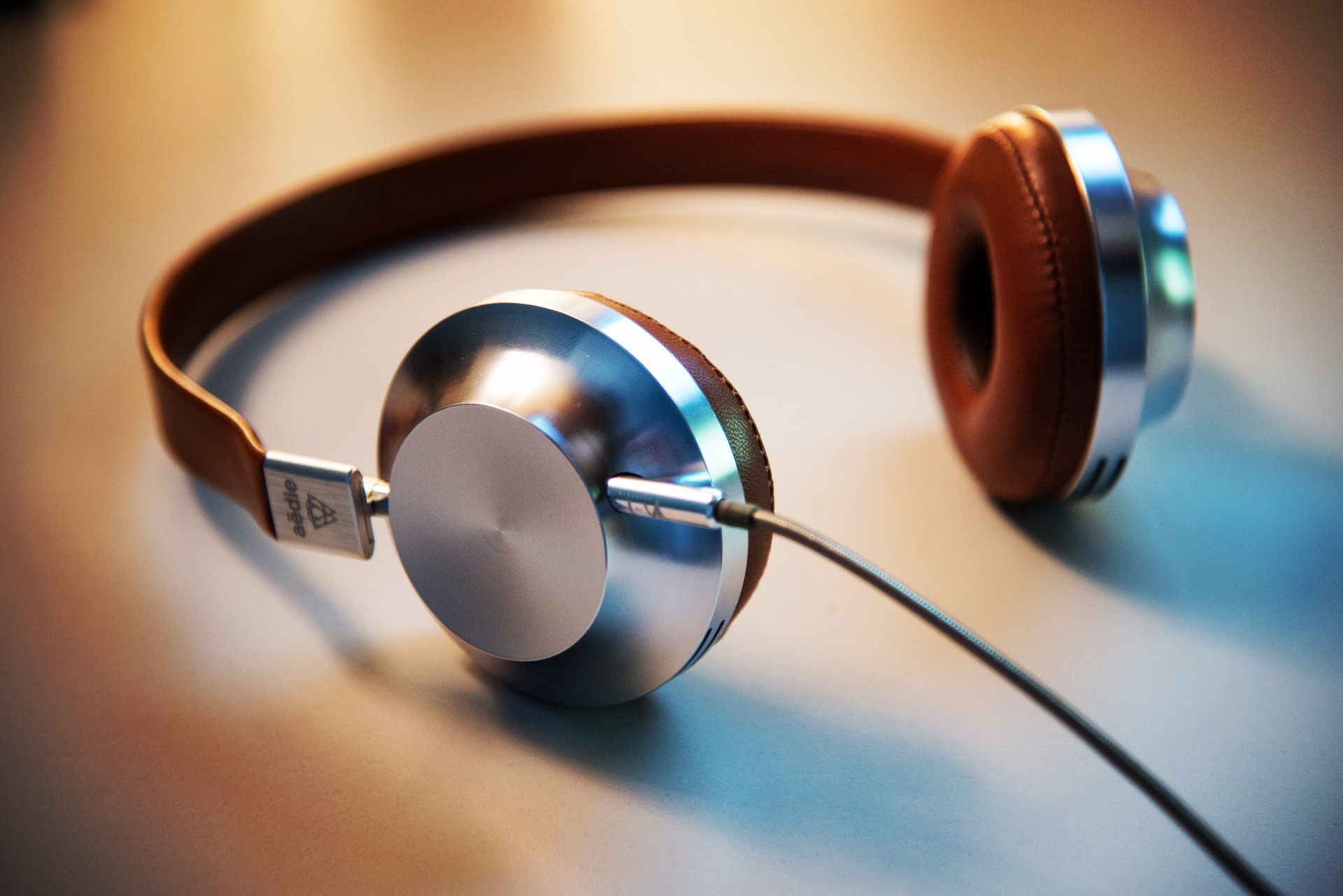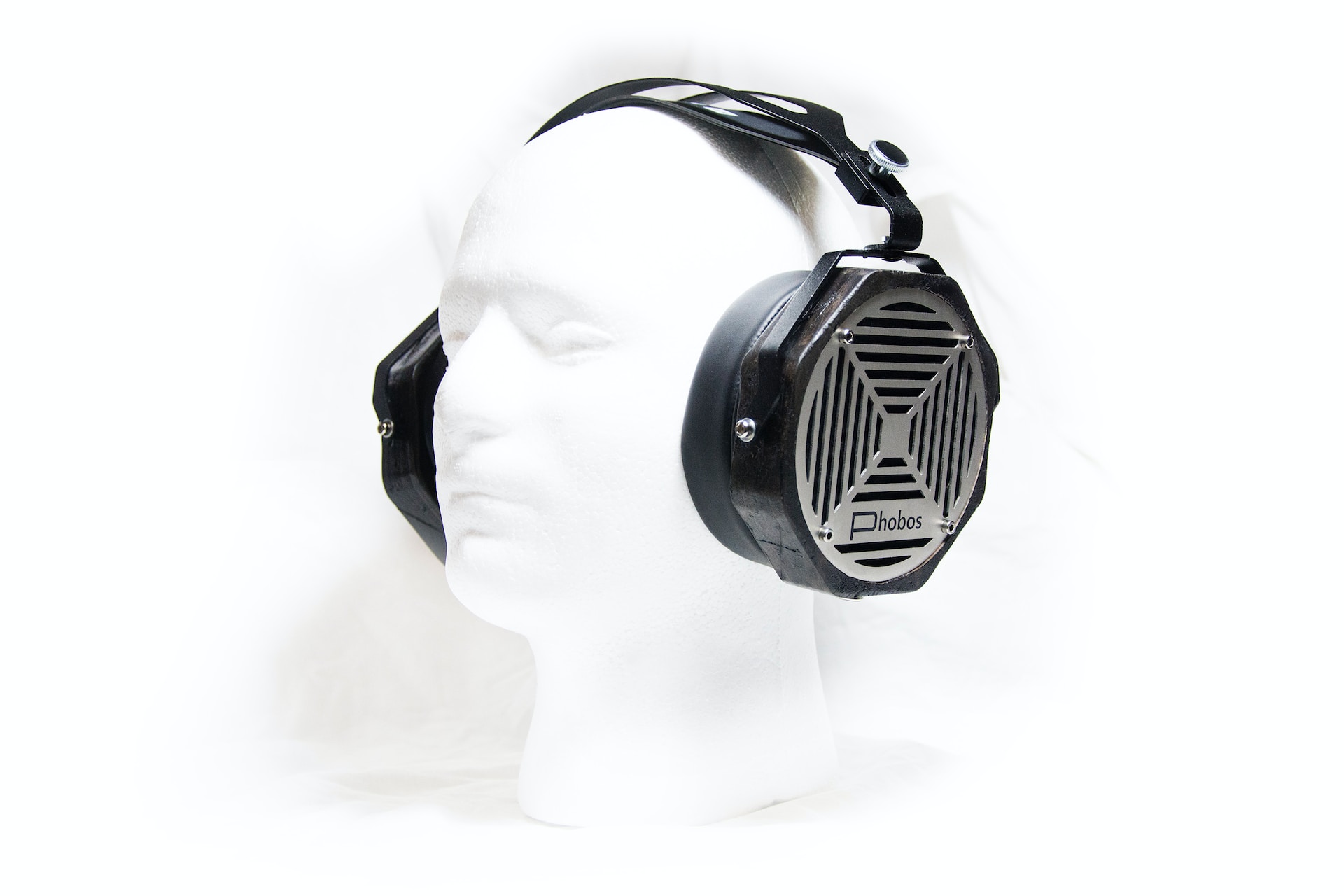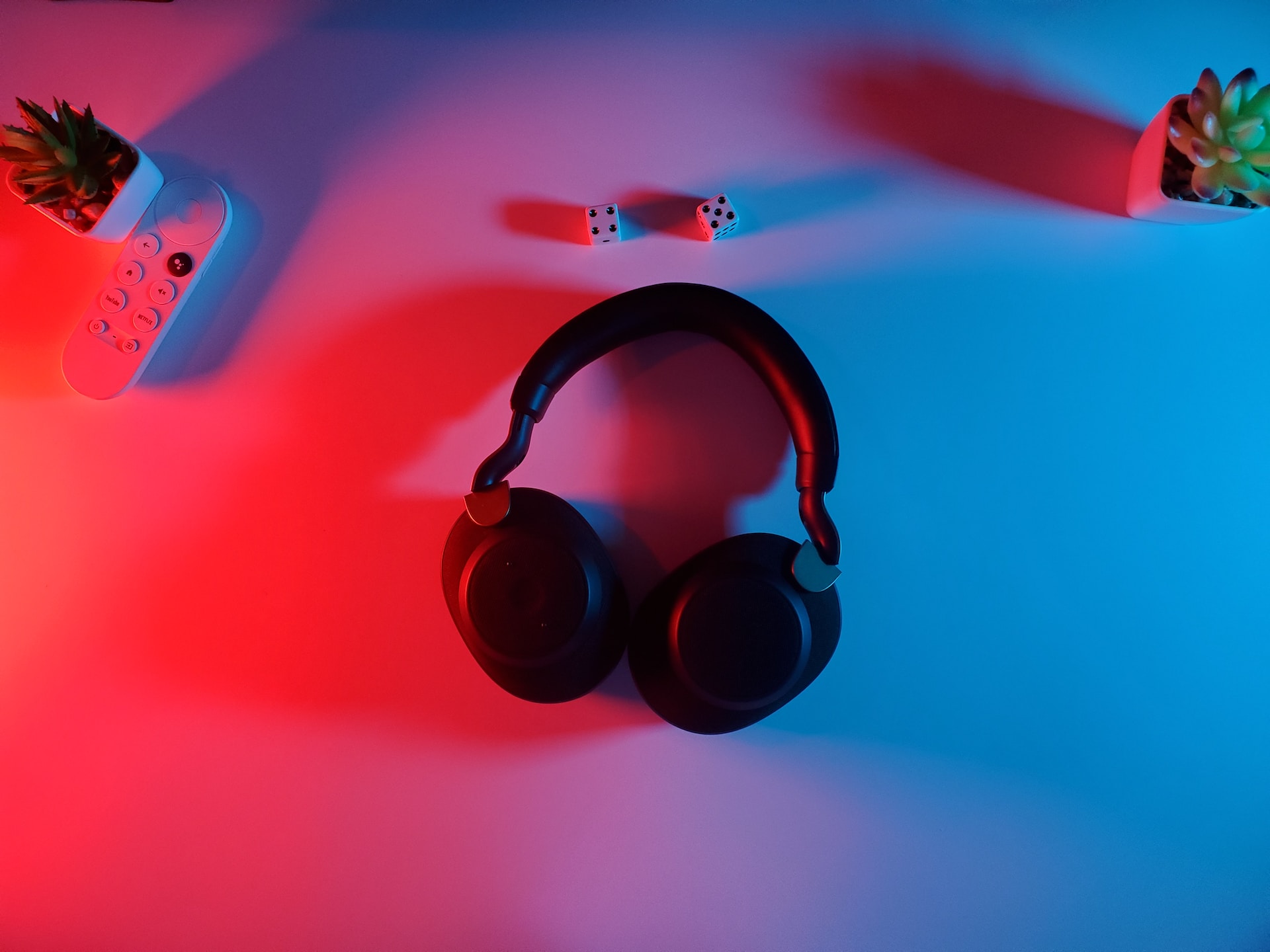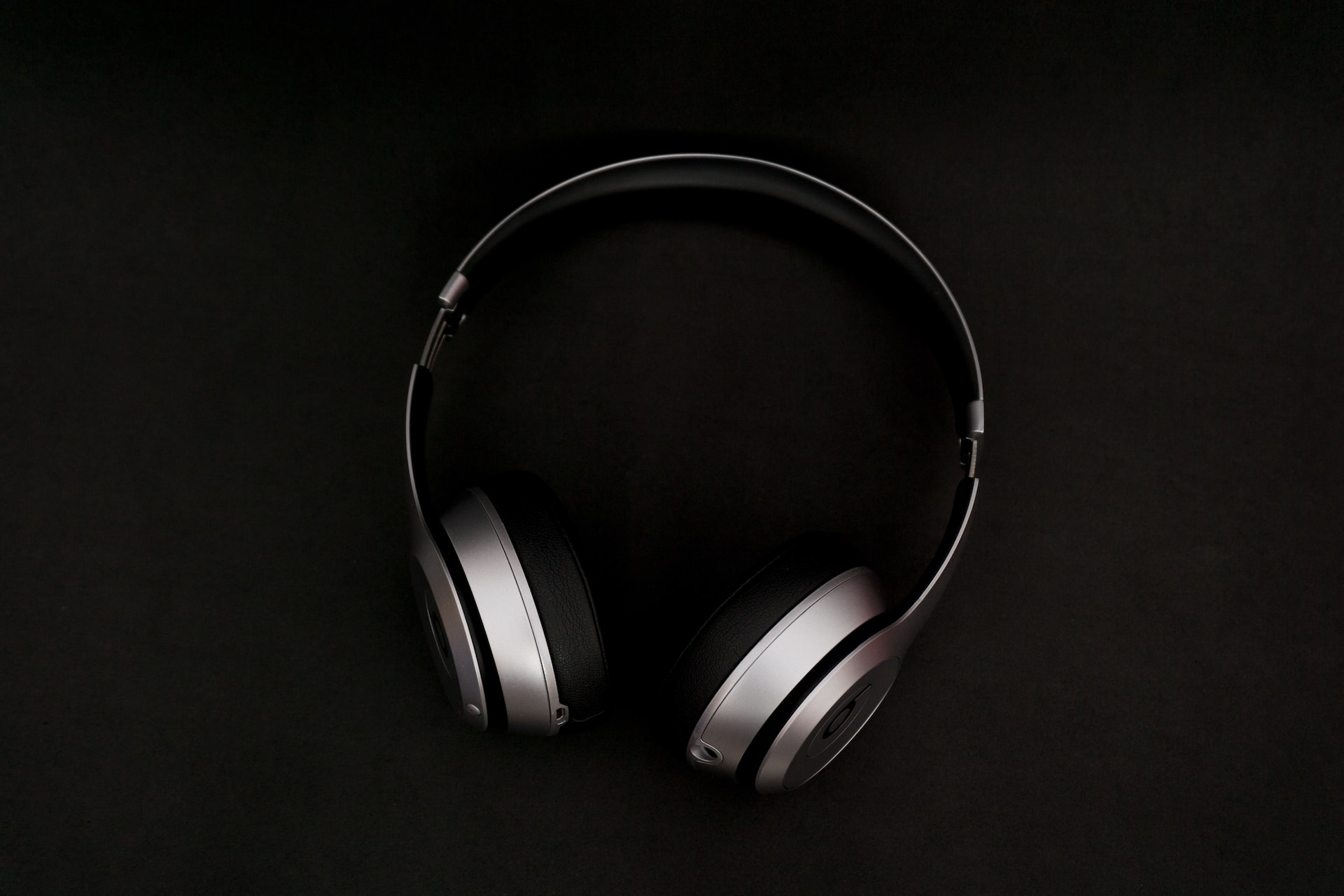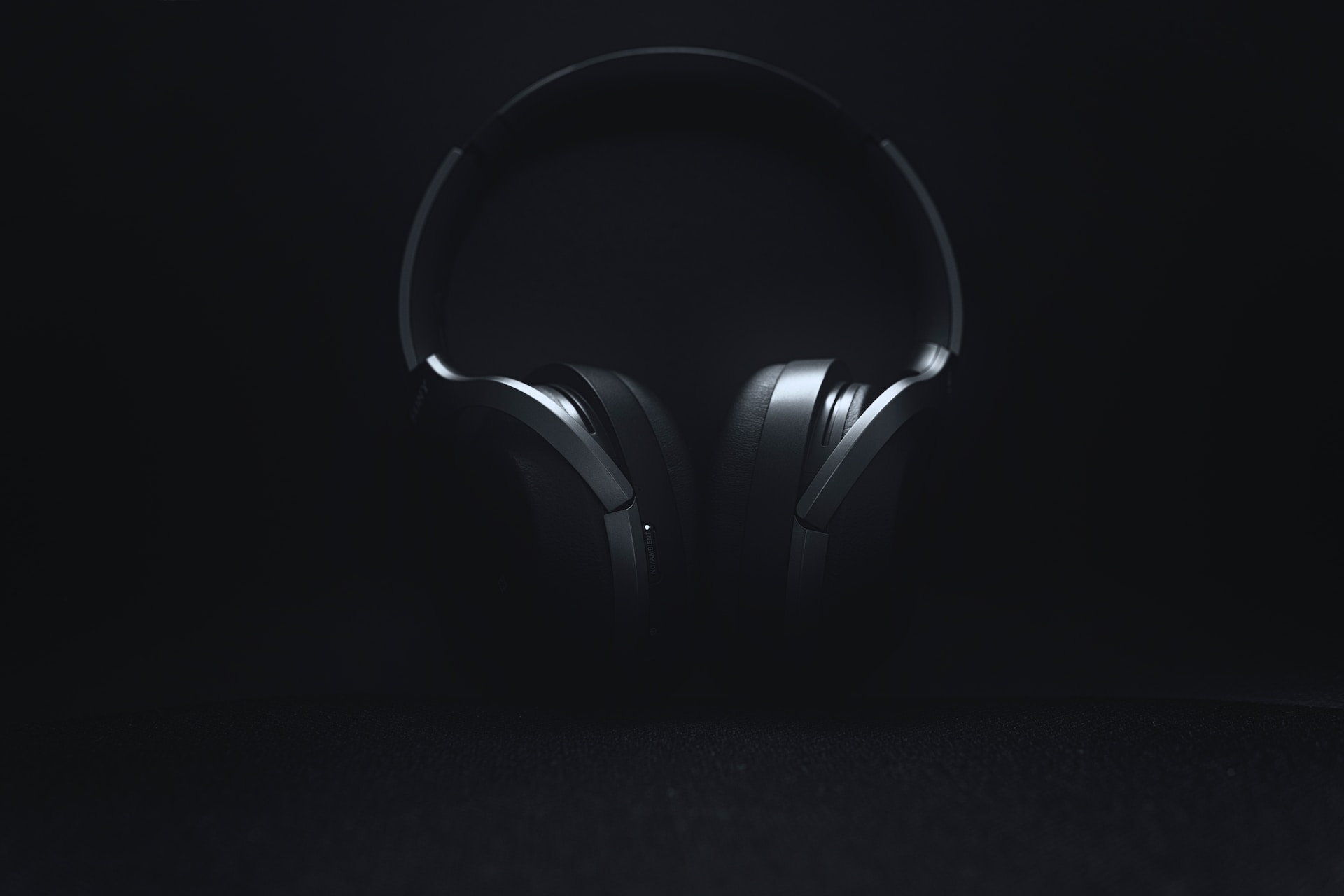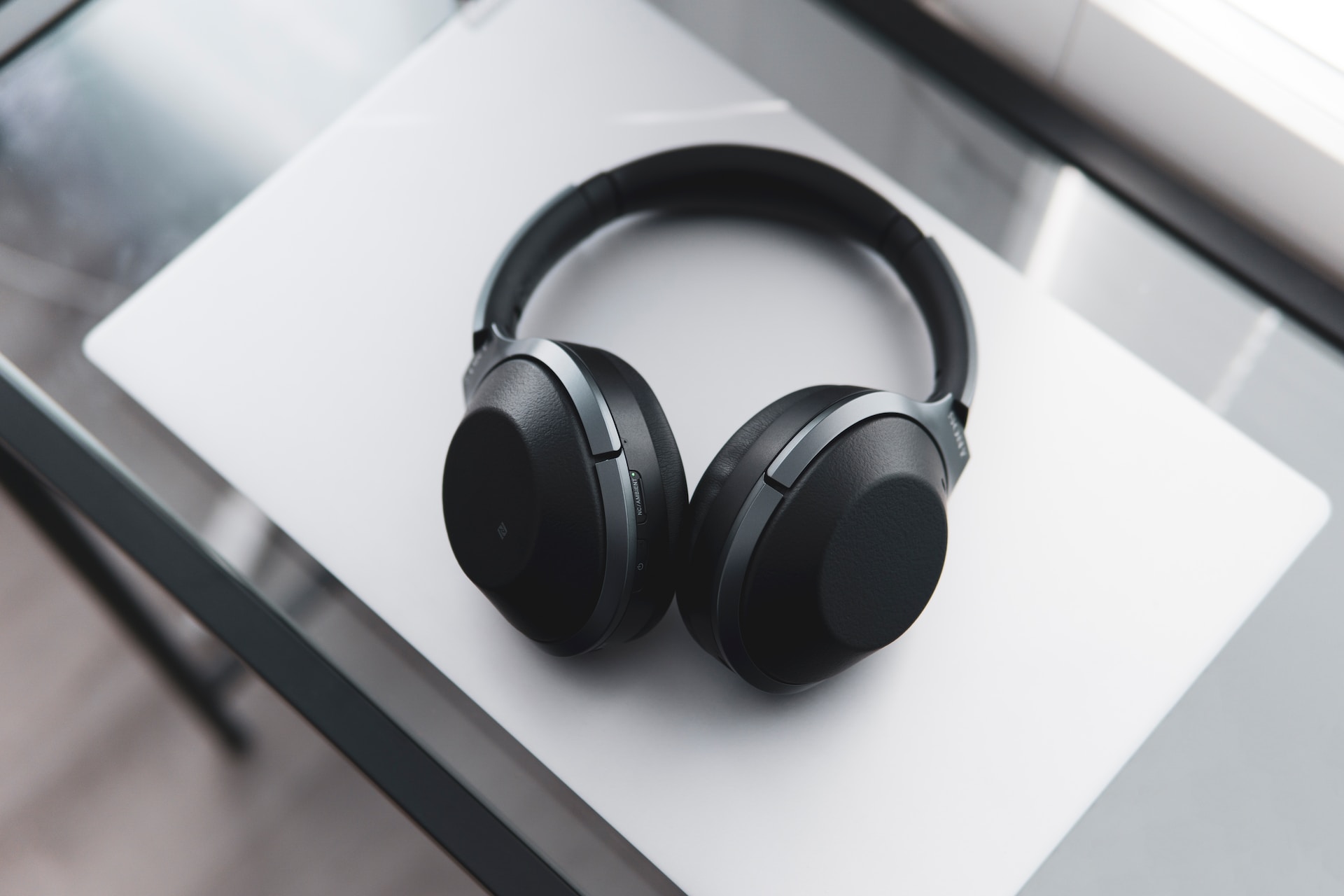If you are looking for a new pair of headphones, you might be overwhelmed by the number of options available on the market. There are different types, styles, features, and prices to consider, but ultimately, you want to find the best headphones for your needs.
One of the most important aspects to consider when choosing headphones is comfort. After a few minutes of listening, you don’t want to wear something that hurts your ears or head. Comfortable headphones will allow you to enjoy your music, podcasts, games, or movies for longer without discomfort or fatigue.
Another important aspect to consider when choosing headphones is sound quality. You want to hear your audio accurately and realistically without distortion, noise, or imbalance. Sound quality will enhance your listening experience and immerse you in your audio.
But how do you find the most comfortable headphones delivering great sound performance? What are the factors that affect comfort and sound quality? And how can you compare different headphones on these criteria?
This article will answer these questions and help you find the best headphones for comfort and sound quality. We will explain what makes headphones comfortable, what makes them sound good, and how to compare them using a comfort score, sound quality score, and a test system.
We will also provide examples of some of the best headphones on the market that offer comfort and sound quality based on our research and testing.
By the end of this article, you will better understand how to choose the best headphones for comfort and sound quality according to your ears and preferences.
What Makes Headphones Comfortable?
Comfort is subjective, meaning different people may have different opinions on what makes headphones comfortable. However, some common factors tend to influence comfort for most people.
These factors include weight, clamping force, padding, adjustability, and breathability.
Weight
Weight refers to how heavy or light the headphones are when worn on your head or ears.
The Weight tends to influence the comfort of over-ear and on-ear headphones more than in-ears or earbuds.
Headphones below 0.55 lbs are light, and above 0.75 lbs are considered heavy.
Lightweight headphones generally score higher since they tend to apply less pressure to the top of the head.
However, the weight alone does not determine comfort, as other factors, such as clamping force and padding, also play a role.
Lightweight headphones:
- Bose QuietComfort 35 II3: These wireless over-ear headphones weigh only 0.52 lbs and have soft synthetic protein leather padding that conforms to your ears. They also have active noise cancellations that block out ambient noise and enhance sound quality. They have a comfort score of 8/10 on RTINGS.com.
- Sony WH-1000XM4: These wireless over-ear headphones weigh only 0.56 lbs and have plush memory foam padding that adapts to your head shape. They also have active noise cancellation that adjusts to your environment and delivers excellent sound performance. They have a comfort score of 8/10 on RTINGS.com.
Heavy headphones:
- Audeze LCD-4: These wired over-ear headphones weigh a whopping 1.54 lbs and have thick leather padding that covers large ear cups. They have planar magnetic drivers that produce a detailed and spacious soundstage. They have a comfort score of 5/10 on RTINGS.com.
- Sennheiser HD 820: These wired over-ear headphones weigh 0.86 lbs and have microfiber padding surrounding glass ear cups. They have dynamic drivers that deliver a balanced and accurate sound signature. They have a comfort score of 6/10 on RTINGS.com.
Clamping Force
Clamping force refers to how tight or lose the headphones fit around your head or ears.
This force affects the comfort of all types of headphones, especially over-ear and on-ear ones.
Headphones with low clamping force tend to feel more comfortable as they do not squeeze your head or ears too much.
However, too low a clamping force may compromise stability, as they may fall off easily during movement.
Headphones with high clamping force tend to feel less comfortable, as they may cause pressure points or pain in your head or ears over time.
However, too high a clamping force may also improve isolation, as they may block out more external noise.
The ideal clamping force depends on your preference, head size, and shape, but it should generally be between 0.5 lbs and 1lb.
Low clamping force headphones:
- Philips SHP9500: These wired over-ear headphones have a clamping force of only 0.5 lbs, which makes them very comfortable to wear for long periods. They have breathable mesh padding that covers large ear cups. They have an open-back design that creates a wide and natural soundstage. They have a comfort score of 8/10 on RTINGS.com.
- Beats Solo Pro: These wireless on-ear headphones have a clamping force of only 0.6 lbs, which makes them feel light and easy on your ears. They have soft memory foam padding that covers small ear cups. They also have active noise cancellation that reduces ambient noise and enhances bass response. They have a comfort score of 7/10 on RTINGS.com.
High clamping force headphones:
- Beyerdynamic DTPRO (80Ω): These wired over-ear headphones have a clamping force of 1.2 lbs, which makes them feel tight and secure on your head. They have velour padding that covers large ear cups. They have dynamic drivers that deliver a neutral and detailed sound profile. They have a comfort score of 7/10 on RTINGS.com.
- Audio-Technica ATH-M50x: These wired over-ear headphones have a clamping force of 1.3 lbs, which makes them feel snug and stable on your ears. They have leatherette padding that covers medium-sized ear cups. They have dynamic drivers that deliver a bass-rich and clear sound quality. They have a comfort score of 6/10 on RTINGS.com.
Padding
Padding refers to the material and thickness of the cushions that cover the ear cups or earbuds.
This affects the comfort of all types of headphones, especially over-ear and on-ear ones.
Headphones with soft and thick padding tend to feel more comfortable as they provide more cushioning and support for your ears.
However, too soft and thick padding may also trap more heat and moisture, making your ears sweaty and uncomfortable over time.
Headphones with hard and thin padding tend to feel less comfortable as they provide less cushioning and support for your ears.
However, too hard and thin padding may also allow more air circulation, keeping your ears cooler and dryer over time.
The ideal padding depends on your preference, ear size, and shape. Still, generally, it should be made of a breathable and durable material, such as velour, memory foam, or silicone.
Soft and thick padding headphones:
- Sennheiser HD 650: These wired over-ear headphones have soft and thick velour padding covering large ear cups. They have an open-back design that creates a spacious and realistic soundstage. They have dynamic drivers that deliver a warm and smooth sound signature. They have a comfort score of 9/10 on RTINGS.com.
- Sony WH-1000XM4: These wireless over-ear headphones have soft and thick memory foam padding covering medium-sized ear cups. They also have active noise cancellation that adapts to your environment and delivers excellent sound performance. They have a comfort score of 8/10 on RTINGS.com.
Hard and thin padding headphones:
- Koss Porta Pro: These wired on-ear headphones have hard, thin foam padding covering small ear cups. They have a semi-open design that creates a decent and natural soundstage. They have dynamic drivers that deliver a bass-heavy and bright sound profile. They have a comfort score of 5/10 on RTINGS.com.
- Apple AirPods Pro: These wireless in-ear headphones have hard and thin silicone padding that covers small earbuds. They also have active noise cancellation that reduces ambient noise and enhances bass response. They have a comfort score of 6/10 on RTINGS.com.
Adjustability
Adjustability refers to the ability to change the headphones’ size, shape, or position to fit your head or ears better. This affects the comfort of all types of headphones, especially over-ear and on-ear ones.
Headphones with high adjustability tend to feel more comfortable, allowing you to customize the fit and comfort.
However, too high adjustability may compromise stability, as they may lose their shape or position during movement.
Headphones with low adjustability tend to feel less comfortable, as they limit your options to fit and comfort to their default settings.
However, too low adjustability may improve stability, as they may stay in place better during movement.
The ideal adjustability depends on your preference, head size, and shape. Still, generally, it should include features such as headband height adjustment, ear cup rotation, swivel or tilt, and earbud size or shape options.
High adjustability headphones:
- SteelSeries Arctis Pro Wireless: These wireless over-ear headphones have high adjustability features, such as headband height adjustment, ear cup rotation, swivel and tilt, and interchangeable ear pads. They also have a retractable boom microphone, a wireless transmitter with an OLED screen, and a dual-battery system for continuous use. They have dynamic drivers that deliver a balanced and customizable sound profile. They have a comfort score of 8/10 on RTINGS.com.
- Jabra Elite Active 75t: These wireless in-ear headphones have high adjustability features, such as earbud size options, ear wing options, and an app that lets you customize the sound profile, noise isolation, controls, and more. They also have an IP57 rating for dust and water resistance, a decent integrated microphone, and a long battery life. They have dynamic drivers that deliver a bass-rich and clear sound quality. They have a comfort score of 7/10 on RTINGS.com.
Low adjustability headphones:
- Grado SR80e: These wired over-ear headphones have low adjustability features, such as headband height adjustment only. They also have an open-back design that leaks a lot of sounds, a long and bulky cable that is not detachable, and no microphone or controls. They have dynamic drivers that deliver a bright and detailed sound profile. They have a comfort score of 5/10 on RTINGS.com1.
- Samsung Galaxy Buds+: These wireless in-ear headphones have low adjustability features, such as earbud size options only. They also have an IPX2 rating for water resistance only, an average integrated microphone, and a decent battery life. They have dynamic drivers that deliver a neutral and accurate sound profile. They have a comfort score of 6/10 on RTINGS.com.
Breathability
The design and materials of the headphones determine how much airflow they allow through. This is known as breathability.
The comfort of all types of headphones, especially over-ear and on-ear, depends on breathability.
Headphones with high breathability tend to feel more comfortable as they prevent your ears from getting too hot or sweaty over time.
However, too high breathability may compromise isolation, as they may let in more external noise or leak more sound out.
Headphones with low breathability tend to feel less comfortable as they trap more heat and moisture around your ears over time.
However, too low breathability may also improve isolation, as they may block out more external noise or leak less sound out.
The ideal breathability depends on your preference, environmental conditions, and usage scenarios. Still, generally, it should be influenced by factors such as open-back or closed-back design, padding material and thickness, ear cup or earbud size and shape, and ventilation holes or slots.
High breathability headphones:
- Grado SR80e: These wired over-ear headphones have high breathability features, such as an open-back design, thin foam padding, and large ear cups. They have dynamic drivers that deliver a bright and detailed sound profile. They have a breathability score of 8/10 on RTINGS.com.
- Philips Fidelio X3: These wired over-ear headphones have high breathability features, such as an open-back design, velour padding, and large ear cups. They have dynamic drivers that deliver a warm and spacious sound profile. They have a breathability score of 8/10 on RTINGS.com.
Low breathability headphones:
- Beats Solo Pro: These wireless on-ear headphones have low breathability features, such as a closed-back design, leatherette padding, and small ear cups. They also have active noise cancellation that reduces ambient noise and enhances bass response. They have a breathability score of 3/10 on RTINGS.com.
- Samsung Galaxy Buds+: These wireless in-ear headphones have low breathability features, such as a closed-back design, silicone padding, and small earbuds. They also have passive noise isolation that blocks external noise and delivers a neutral and accurate sound profile. They have a breathability score of 4/10 on RTINGS.com.
Here’s a comparison table of the comfort scores and tests of these top 5 headphones:
| Headphone | Comfort Score | Weight | Clamping Force | Breathability | Portability | Build Quality | Stability |
|---|---|---|---|---|---|---|---|
| Bose QuietComfort 35 II/QC35 II Wireless 2018 | 9.3/10 | 0.52 lbs | 0.78 lbs | 6/10 | 6/10 | 7/10 | 7/10 |
| Sony WH-1000XM4 Wireless | 9/10 | 0.56 lbs | 0.99 lbs | 6/10 | 6/10 | 8/10 | 7/10 |
| Apple AirPods Pro Truly Wireless | 8/10 | N/A | N/A | N/A | N/A | N/A | N/A |
| Samsung Galaxy Buds+ Truly Wireless | 7/10 | N/A | N/A | N/A | N/A | N/A | N/A |
| Philips SHP9500 | 9/10 | 0.66 lbs | 0.74 lbs | 9/10 | 3/10 | 7/10 |
What Makes Headphones Sound Good?
Sound quality is also subjective, meaning different people may have different opinions on what makes headphones sound good. However, some common factors tend to influence sound quality for most people.
These factors include frequency response, soundstage, noise isolation/cancellation, impedance, and sensitivity.
Frequency Response
The full range of audible frequencies, from low bass to high treble, is reproduced by the headphones with a certain degree of fidelity. This is called frequency response.
The sound quality of all headphones depends on frequency response, as it determines how balanced, accurate, and realistic the sound is.
Headphones with a balanced frequency response tend to sound good, as they reproduce all frequencies equally and faithfully without boosting or cutting any part of the spectrum.
However, depending on their taste, music genre, or listening environment, some people may prefer a more unbalanced frequency response, such as a bass-heavy or treble-heavy sound.
The ideal frequency response depends on your preference, but generally, it should be within the range of 20Hz to 20kHz, which is the human hearing range.
Balanced frequency response headphones:
- Sennheiser HD 650: These wired over-ear headphones have a balanced frequency response, slightly emphasising the mid-range and treble. They reproduce vocals and instruments clearly and accurately without overpowering the bass or sounding harsh. They have a frequency response score of 9.7/10 on SoundGuys.com.
- Sony WH-1000XM4: These wireless over-ear headphones have a balanced frequency response, slightly emphasising the bass and treble. They reproduce music with a warm and lively sound without losing detail or clarity. They also have an app that lets you customize the sound profile. They have a frequency response score of 9.6/10 on SoundGuys.com.
Some examples of unbalanced frequency response headphones are:
- Beats Solo Pro: These wireless on-ear headphones have an unbalanced frequency response, strongly emphasising the bass. They reproduce music with a powerful and punchy sound but may drown out some vocals and instruments in the mid-range and treble. They have a frequency response score of 7.6/10 on SoundGuys.com.
- Beyerdynamic DT 990 PRO: These wired over-ear headphones have an unbalanced frequency response, with a strong emphasis on the treble. They reproduce music with a bright, detailed sound but may sound harsh or sibilant with some tracks or genres. They have a frequency response score of 7.5/10 on SoundGuys.com.
Soundstage
The ability of the headphones to create a sense of space and direction in the sound is called soundstage.
The sound quality of all types of headphones depends on a soundstage, as it determines how immersive, realistic, and natural the sound is.
Headphones with a wide soundstage tend to sound good, as they create an impression that the sound is coming from outside your head rather than inside. They also make it easier to locate and separate different sounds in the audio.
However, some people may prefer a narrow soundstage, such as gamers or movie watchers who want to focus on the dialogue or action rather than the background or ambient sounds.
The ideal soundstage depends on your personal preference. Still, generally, it is influenced by factors such as open-back or closed-back design, driver size and type, ear cup shape and size, and crossfeed or binaural effects.
Wide soundstage headphones:
- Philips Fidelio X3: These wired over-ear headphones have a wide soundstage thanks to their open-back design and large dynamic drivers. They create an impression that the sound is coming from around you rather than your ears. They also make it easy to distinguish different sounds in the audio.
- AKG K240 Studio: These wired over-ear headphones have a wide soundstage thanks to their semi-open design and large dynamic drivers. They create an impression that the sound is coming from before you rather than from your ears. They also make it easy to separate different sounds in the audio.
Narrow soundstage headphones:
- Apple AirPods Pro: These wireless in-ear headphones have a narrow soundstage due to their closed-back design and small dynamic drivers. They create an impression that the sound is coming from inside your head rather than outside. They also make it hard to locate and separate different sounds in the audio.
- Samsung Galaxy Buds+: These wireless in-ear headphones have a narrow soundstage due to their closed-back design and small dynamic drivers. They create an impression that the sound is coming from inside your head rather than outside. They also make it hard to distinguish different sounds in the audio.
Noise Isolation/Cancellation
Noise isolation/cancellation refers to how well the headphones block external noise from reaching your ears.
The isolation/cancellation affects the sound quality of all types of headphones, as it determines how much you can hear your audio without being disturbed by unwanted sounds.
Headphones with effective noise isolation/cancellation tend to sound good, as they reduce ambient noise and enhance audio clarity and bass response.
However, some people may prefer less effective noise isolation/cancellation, such as those who want to stay aware of their surroundings or avoid feeling too isolated.
The ideal noise isolation/cancellation depends on your preference and listening situation. Still, generally, it can be achieved by passive means such as closed-back design padding material and thickness ear cup or earbud size and shape or by active means such as electronic circuitry that generates anti-noise signals to cancel out external noise.
Effective noise isolation/cancellation headphones:
- Bose QuietComfort 35 II: These wireless over-ear headphones have effective noise cancellation thanks to their active noise cancelling technology that adapts to your environment and reduces ambient noise across various frequencies. They also have passive noise isolation thanks to their closed-back design and thick leatherette padding that seals around your ears.
- Sony WH-1000XM4: These wireless over-ear headphones have effective noise cancellation thanks to their active noise cancelling technology that adjusts to your environment and reduces ambient noise across various frequencies. They also have passive noise isolation thanks to their closed-back design and thick memory foam padding that conform to your ears. They have an isolation score of 8/10 on RTINGS.com.
Ineffective noise isolation/cancellation headphones are:
- Grado SR80e: These wired over-ear headphones have ineffective noise isolation due to their open-back design that lets in a lot of external noise and leaks a lot of audio. They also have thin foam padding that does not seal around your ears well. They have an isolation score of 2/10 on RTINGS.com.
- Koss Porta Pro: These wired on-ear headphones have ineffective noise isolation due to their semi-open design that lets in some external noise and leaks out some audio. They also have thin foam padding that does not cover your ears fully.
Impedance
The amount of resistance the headphones offer to the electric current that drives them is called impedance.
The sound quality of all headphones, especially wired ones, depends on impedance as it determines how much power they need to produce optimal sound levels.
Headphones with low impedance are easier to drive and can be powered by most devices, such as smartphones, laptops, or MP3 players.
However, low-impedance headphones may also be more prone to distortion or damage from high-power sources, such as amplifiers or mixers.
Headphones with high impedance tend to be harder to drive and may need an amplifier to produce adequate sound levels.
However, high-impedance headphones may also be more resistant to distortion or damage from high-power sources and may have a better transient response or sound quality.
The ideal impedance depends on your preference and source device, but generally, it should match or be slightly higher than the output impedance of the amplifier or device.
Low-impedance headphones:
- Sony MDR-7506: These wired over-ear headphones have a low impedance of 63 ohms, which makes them easy to drive by most devices. They have dynamic drivers that deliver a clear and balanced sound profile. They have an impedance score of 8/10 on SoundGuys.com.
- Apple AirPods Pro: These wireless in-ear headphones have a low impedance of 16 ohms, which makes them easy to drive by most devices. They also have active noise cancellation that reduces ambient noise and enhances bass response. They have an impedance score of 8/10 on SoundGuys.com.
High-impedance headphones:
- Beyerdynamic DT 990 PRO: These wired over-ear headphones have a high impedance of 250 ohms, which makes them hard to drive by most devices. They may need an amplifier to produce optimal sound levels. They have dynamic drivers that deliver a bright and detailed sound profile. They have an impedance score of 6/10 on SoundGuys.com.
- Sennheiser HD 650: These wired over-ear headphones have a high impedance of 300 ohms, which makes them hard to drive by most devices. They may need an amplifier to produce optimal sound levels. They have dynamic drivers that deliver a warm and smooth sound signature. They have an impedance score of 6/10 on SoundGuys.com1.
Sensitivity
Sensitivity is how loud the headphones can get with a given amount of power.
The sound quality of all headphones depends on sensitivity, as it determines the maximum volume you can achieve without distortion or clipping.
Headphones with high sensitivity tend to be louder with less power and can be driven by most devices, such as smartphones, laptops, or MP3 players.
However, high-sensitivity headphones may also be more susceptible to noise or interference from the source device or cable and may have a lower dynamic range or sound quality.
Headphones with low sensitivity tend to be quieter with more power and may need an amplifier to produce adequate volume levels.
However, low-sensitivity headphones may also be less affected by noise or interference from the source device or cable and may have a higher dynamic range or sound quality.
The ideal sensitivity depends on your personal preference and listening environment. Still, generally, it should be within the range of 85dB to 120dB per milliwatt (dB/mW), which is the safe listening range for human ears.
High-sensitivity headphones:
- JBL Tune 750BTNC: These wireless over-ear headphones have a high sensitivity of 115 dB/mW, which makes them very loud with less power. They also have active noise cancellation that reduces ambient noise and enhances bass response. They have a sensitivity score of 9/10.
- Bose QuietComfort Earbuds: These wireless in-ear headphones have a high sensitivity of 109 dB/mW, which makes them very loud with less power. They also have active noise cancellation that adapts to your environment and delivers excellent sound performance. They have a sensitivity score of 9/10 on SoundGuys.com.
Low-sensitivity headphones:
- HiFiMan HE400i: These wired over-ear headphones have a low sensitivity of 93 dB/mW, making them quieter with more power. They may need an amplifier to produce adequate volume levels. They have planar magnetic drivers that deliver a neutral and detailed sound profile. They have a sensitivity score of 6/10 on SoundGuys.com1.
- Shure SE846: These wired in-ear headphones have a low sensitivity of 90 dB/mW, making them quieter with more power. They may need an amplifier to produce adequate volume levels. They have balanced armature drivers that deliver a customizable and accurate sound profile. They have a sensitivity score of 6/10 on SoundGuys.com1.
How to Choose the Right Headphones for Your Comfort Needs
Choosing the right headphones for your comfort needs can be tricky since there are many factors to consider. However, there are some factors to consider when choosing headphones for comfort:
- The type of headphones:over-ear, on-ear, in-ear, or earbuds. Each type has its pros and cons when it comes to comfort. Over-ear headphones are more comfortable for long listening sessions because they have larger earcups that fit around the ears and evenly distribute the weight and pressure. However, they can also be bulky, heavy, and warm. On-ear headphones are smaller and lighter than over-ear headphones, but they rest on the ears and can cause more pressure and fatigue. In-ear headphones and earbuds are portable and discreet, but they can also be uncomfortable for some people because they insert into the ear canal or sit in the outer ear. They can also vary in fit and seal depending on the size and shape of your ears.
- The fit and size of the headphones:
the headphones should fit snugly but not too tightly on your head and ears. They should also match the size and shape of your ears for a better seal and sound quality. You can look for headphones with adjustable headbands, swivelling earcups, or different sizes of ear tips to find the best fit for you. You can also try different headphones before buying them to see how they feel on your head and ears. - The padding and material of the headphones:
the padding and material of the headphones can affect how soft, breathable, and durable they are. You can look for headphones that have plush, cushioned, or memory foam padding that conforms to your ears and head. You can also look for headphones with fabric, leather, or synthetic leather that feels smooth and comfortable on your skin. You should avoid headphones with hard plastic or metal parts that can dig into your ears or head. - The weight and clamping force of the headphones:
the weight and clamping force of the headphones can affect how heavy and tight they feel on your head and ears. You can look for lightweight headphones with a low clamping force that doesn’t squeeze your head too much. You can also measure different headphones’ weight and clamping force using a scale and a spring scale, respectively. You should avoid headphones that are too heavy or too tight for comfort.
How to Improve the Comfort of Your Existing Headphones
If you already have a pair of headphones you like but want to make them more comfortable, there are some tips and tricks you can try to improve their comfort without buying new ones. Here are some of them:
- Adjust the headband, earcups, or ear tips for a better fit:
you can try to adjust the length of the headband, the angle of the earcups, or the size of the ear tips to find a more comfortable fit for your head and ears. You can bend or stretch the headband gently to loosen or tighten it according to your preference.
- Replace or add padding, cushions, or covers for more softness and breathability:
you can try to replace or add some padding, cushions, or covers to your headphones to make them more soft and breathable. You can buy aftermarket products that are compatible with your headphones or make your own DIY ones using fabric, foam, or cotton. You can also wash or replace your padding, cushions, or covers regularly to keep them clean and fresh.
- Clean and maintain your headphones for optimal comfort and hygiene:
you can try to clean them regularly to keep them in good condition and prevent any dirt, dust, sweat, or bacteria from accumulating. You can use a soft cloth, a cotton swab, some rubbing alcohol, or some mild soap and water to gently wipe or scrub your headphones. You should also store your headphones properly in a case or pouch when not in use to protect them from damage.
Conclusion
Headphones are personal devices that can make listening to music, podcasts, games, movies, or other audio content more enjoyable and immersive. However, not all headphones are created equal, and many factors affect their comfort and sound quality.
By understanding common headphone specs, such as frequency response, soundstage, noise isolation/cancellation, impedance, and sensitivity, you can make a better buying decision and find the best headphones for your needs and preferences.


